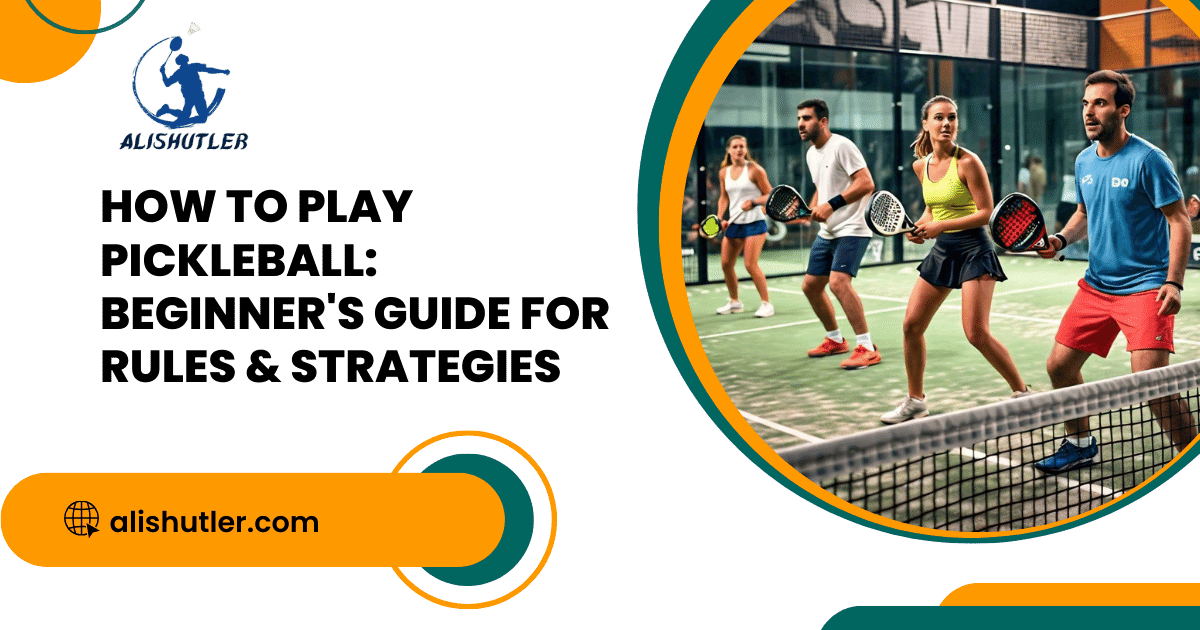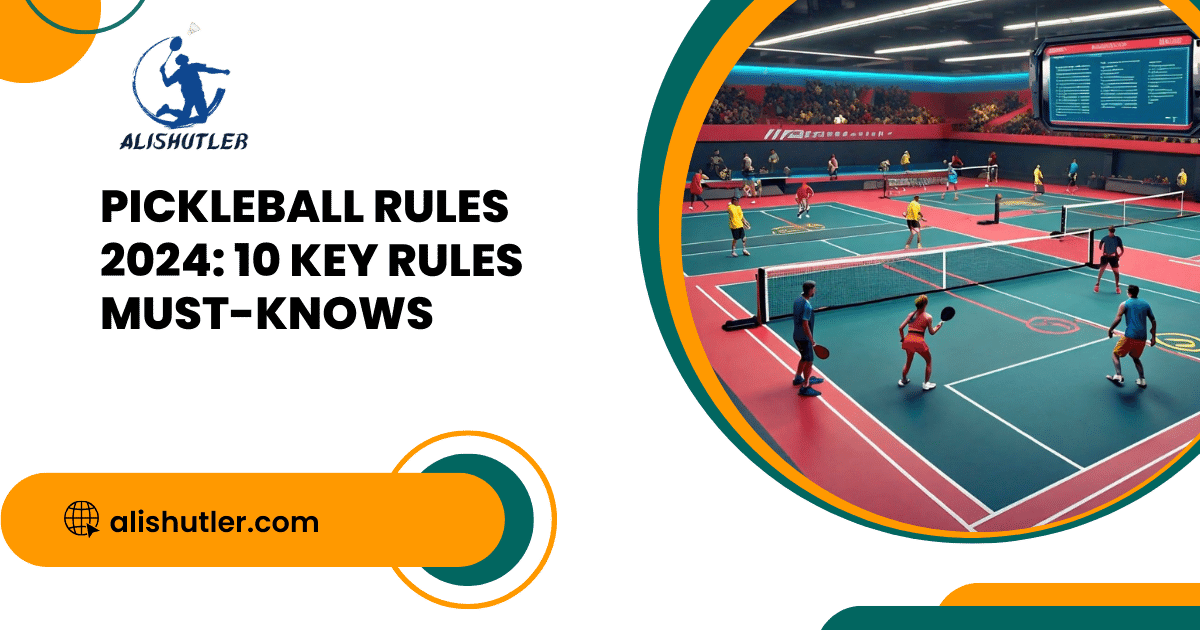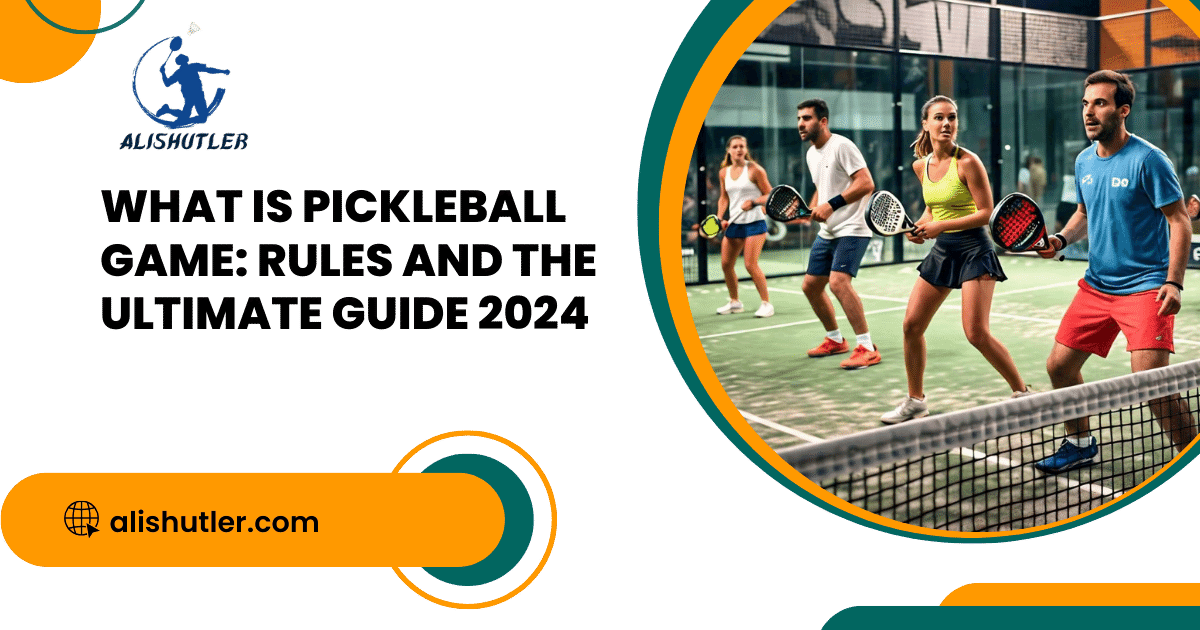Pickleball games are so popular in the world nowadays with all age groups. Some of the advantages of pickleball are that it is a recreational game for all age groups, and it resembles tennis, badminton, and table tennis in which the player continuously hits the ball back and forth. It started in 1960sthe and has become an international industry. The rules we will discuss in this article together with the skills and training you will learn for how to play pickleball will entail games that will need you to adopt a strategic approach and also be dynamic around the court.
Key Takeaways
- Practice the Basics: Understanding the fundamental rules and techniques of pickleball, such as serving, rallying, and positioning, is essential to enjoy and excel in the game.
- Focus on the Serve: Mastering your serve can give you a strategic advantage in pickleball. Start with consistency before adding variations to keep your opponent’s guessing.
- Mind the Kitchen Rules: Adhering to the rules of the non-volley zone, also known as the kitchen, is crucial for pickleball players to avoid faults and maintain control during gameplay.
- Strategize Your Serve: Tailoring your serving strategy based on your skill level and the situation can help you dictate the pace of the game and keep your opponents on their toes.
- Stay Agile in Gameplay Positioning: Being adaptable and responsive in your positioning on the court can help you anticipate shots, cover ground effectively, and ultimately secure victory.
- Explore Different Courts: Finding and understanding different pickleball court setups can enhance your gameplay experience and prepare you for various playing conditions.
Understanding the Basics
Court Size
A standard pickleball court is 20ft x 44ft compared to the tennis court that is 78ft x 36ft. The battle net at the center should measure 34 inches height.
The courtroom is divided into halves by a net to create two rectangular service courts on opposite sides.
Groundstrokes vs. Volleys
Ground strokes refer to shots that involve a player hitting the ball on the ground while volley concerns the shots taken on the ball as it soars in mid-air. From this finding it can be asserted that both techniques are key to success in pickleball. The first one is used when the player is on the rear end of the court with an easier way of shooting the ball to the other side of the net and the second one is used when the ball is close to the opposite end of the net.
Non-Volley Zone (‘Kitchen’)
The non-volley zone, also called the kitchen, is a 7-foot area (or 6 feet 6 inches in the doubles play) on either side of the net that players cannot hit volleys from. This rule is an attempt to stop players hogging the defence zone around the net.
These areas should be avoided during certain moments of the game because they allow an athlete to influence the game from different sections of the playing field compared to other players.
Starting with the Serve
Mastering Technique
The key to a successful underhand serve in pickleball is to execute a consistent and continuous swing pattern. The backhand serves should be kept on towards the net and the serves should be consistent.
This means the first serve should go over the kitchen line to avoid letting your opponent score or fault. The following have been disclosed; By controlling the ball with lesser power during hitting you are able to ensure greater accuracy and avoid giving an opportunity to the opponent.
Positioning and Footwork
Remember to stand behind the baseline when serving to maintain a legal position. Your foot positioning should be shoulder-width apart for stability and balance during the serve.
When serving, visualize a clear path from your paddle to where you want the ball to land. This visualization can help improve accuracy and control over your serves.
Communication with Partner
In the game of doubles serve one should always communicate with his/her partner. Determine who will play left field or right field and stick to it depending on individual abilities and interests.
Dw during serves and be sure that both opponents are ready to receive the return. String types depends on your serve position and adjusts depending on what part of the ball it will travel next.
Adapting Strategies
Experiment with different serve types such as the huge serve or drop serve to keep your opponents guessing. Varying your serves can help you maintain an element of surprise and control over the game.
Understand how serving to different areas of the court can impact gameplay. Serving towards the sidelines can put pressure on opponents, while serving towards the middle can create confusion between players.
Rallying and Faults

Types of Faults
Once you start to play the pickleball, it is very important to understand clearly what kind of faults there are and how they cause the untimely end of the rally. Another example of a typical mistake is when the ball fails to clear the net or goes out of court, meaning a serve or a point from the opponents. There is another type of fault where the player plays the ball before it hits the ground and the ball is within the non-volley zone; the play then declares a fault.
The ‘Double Bounce Rule’
To enjoy throwing volleys during a pickleball game, there exists a need for players to understand how the double-bounce rule works. This rule applies to the is the fact that each team has to let the ball hit the ground once on their side after serving and only then they may be allowed to volley the ball. If a ball lands out of the court, it leads to a fault and a point for the opponent team.
Starting with a Serve
A rally in pickleball begins with a serve in which a player strikes the ball diagonally across the net from the right half of the court on the serving side into the opposite (receiving) side of the court. The player must make sure the ball can pass through the net without touching it and land successfully on the enemy zone. Missed serve also can result into losing or even giving the opponent points.
The Kitchen Rules
Limitations of Hitting Volleys in the Kitchen
When you are in the kitchen area, volleys must be avoided to prevent getting too close to the net. This restriction ensures fair gameplay and strategic positioning during the match. Players need to step back to hit volleys effectively outside the kitchen zone.
The non serving player is not allowed to strike the ball or jump in the NVZ and strikes the ball inadvertently commits a fault and loss of point. This rule promotes variety in the types of shots being used by players in order to improve the game and make it more balanced for both the offence and defence.
Groundstrokes in the Kitchen
While volleys are restricted in the kitchen, groundstrokes can be played from this area as long as they are executed behind the non-volley zone line. This allows players to maintain a defensive position while still engaging in rallies and responding to opponents’ shots effectively.
Groundstrokes from the kitchen require precision and control to keep the ball within play boundaries. By mastering groundstrokes in this area, players can strategically maneuver around opponents and set up winning shots during intense pickleball matches.
Dimensions and Purpose of the Non-Volley Zone
The kitchen refers to a non-volley zone that measures seven feet from the net from both sides of the court. Its main purpose is to give them a reason and ensure that they do not make volleys that are too close to the net and to make sure that they do it skillfully. A fault is called in the game if a player enters the NVZ while volleying the ball over the net and the victory goes to the other team. It is critical to students’ understanding of the rule and of the importance of following it to maintain a fair competitive balance in pickleball matches.
Scoring in Pickleball
Winning Points
There is the concept of not being able to score a point for the receiving side in pickleball. This does imply that anyone is unable to obtain a point in a game should they fail to serve. There must be conversions picked up in the game of pickleball; such occasions cannot be forfeited; they should be 2 points in difference. This rule ensures a clear victory and adds excitement to the game.
Scoring System
In pickleball the side serving the ball will keep scoring points as long as they have the serve. If the receiving team wins a rally they will then get the serve but no point. It should be noted that points for any player can only be won when the ball is served by that player. This unique aspect of the game requires strategic thinking and precision.
Serving Strategies

Adding Spin
When serving in pickleball, consider adding spin to make it harder for your opponent to return. Spinning the tackle higher or lower will make the outcome of the ball more random. Check if the spin affects their game while defeating you at some point. One can manipulate the ball by spinning it in one of the three ways as it flies across the court to place it in a desired position.
Depth and Height
Deep serving in pickleball is important as it does not allow the opponent to stand close making them late to respond to the opponent’s serving motion. It is a good strategy to try and make the ball land as far as possible from the serving half-service box.
Keeping your serve low over the net is equally important. A low serve is harder to attack, putting pressure on your opponent’s right from the start of the point.
Positioning and Movement
After serving, be ready to move quickly towards the non-volley zone or kitchen line. This strategic positioning allows you to take control of the net and be in a better position for volleys.
Maintain an athletic stance during and after serving, staying light on your feet to react swiftly to your opponent’s shots. Quick footwork can make a significant difference in pickleball matches.
Gameplay Positioning
Offensive Position
It is vital to stand in the offensive position to a pickleball match to prevent losing power and keep your rivals under pressure. The net is a range of threats and offensive opportunities that are close to the previous shooter. Offensive playing as in this case also enables a player to use the weak returns the opponents have to his or her advantage and with this control the playing and hence the speed of the game. This is also a good strategic positioning that allows you achieve better shots and provides maximum control in the game if you are in a rally. This strategic placement also enables you to execute powerful shots and dominate rallies efficiently.
Defensive Play
This is true as well when players need to know when to switch from an attacking stance to a blocking one in pickleball. If your opponent starts gaining momentum or is being more offensive than moving back close to the baseline will assist you against those hard-hitting nonstop shots or returns from ridiculous angles. A defensive stance increases the distance that the player can reach within the court and it blocks out many areas where opponents can strike points. There is a strong need for the players to be able to change direction from being defensive or offensive based on the way the game is going.
Court Layout
It is crucial to get acquainted with the content of the pickleball court in the positioning of the game. Players have to know (through specifics) where everyone should be throughout certain stages of a game. Certain zones in the court include the kitchen (no-volley zone), double sidelines, and the baseline. Choosing the best place within these zones depending on whether a player is serving, returning, or rallying is crucial to ensure that position remains as ideal as possible for the player throughout the match.
Winning the Game
Rules
Knowledge of the pickleball rules will become essential for winning. It is required that players make their services underhand and ensure that two bounces take place on each side of the court before they are allowed to make volleys. Games can be won by the serving team at 11 points with the winning team having a significant point lead over the opponent (at least two points).
Scoring System
The system of scoring points in the pickleball game is relatively simple. Matches are played in the form of long rallies with a team scoring points when the serving team wins a point and the game finishing when one team scores 11 points and beats the other team with 2 points in advance. This system therefore ensures that every time a player is playing the game he or she is assured of fair and competitive game play against other players in the game.
Rotation of Serves
In doubles play, understanding the rotation of serves is key to success. After scoring a point, the serving team switches sides but retains the same server. If the receiving team wins a point, they get the chance to serve next. This rotation continues throughout the game, ensuring equal opportunities for both teams.
Finding and Understanding Courts

Locating
To find pickleball courts, check local community centers, parks, or sports clubs. Online directories also list nearby places.
Layout
Pickleball courts are similar in size to badminton courts with specific markings for different zones. The net divides the court into two sides.
Surfaces
Courts can have various surfaces like asphalt, concrete, or even indoor wooden floors. Each surface affects ball bounce differently.
Summary of How to Play Pickleball
I would like to compliment you on the successful completion of the part dedicated to the elements of pickleball. You have a full grasp of the game rules, basic serving, rules of the court, the scoring system, and the game strategies and position of players on the court. And with these elements in place, you can step onto the court and take your skills to a higher level of pickleball. For further improvement, one should continue to play frequently, taking care to implement what was learnt.
Please continue to learn how to play pickleball, and try out new tactics — and above all, enjoy playing pickleball. Continuous learning and practice will, however, contribute significantly to elevating performance levels whichever stage of development or experience one may be. Well then, take your pickleball paddle, and get to the nearest court to the action is fun and exciting in pickleball!
Frequently Asked Questions
How can I start playing pickleball?
Some facts to know before playing pickleball are that you may need a paddle, a plastic ball with holes, and a specific court. They should learn the most fundamental aspects of the game like scoring and size of the court. Join some local groups or clubs for those people who are beginners in order to practice and enhance their abilities.
Is pickleball suitable for all ages?
Is it possible to play pickleball? Yes of course, pickleball has been proven to be an enjoyable sport for people off all ages. Its flexibility nature of its rules and court size and makes it suitable for children, adults as well as seniors. It offers people an excellent way to stay healthy, meet friends and enjoy pastime activities throughout life stages.
What are the health benefits of playing pickleball?
The game engages and tones your entire body in a similar way with several health advantages including; strength, stamina, cardiovascular, agility, balance as well as coordination. It’s a low-impact sport that helps burn calories, reduce stress levels, and enhance mental sharpness through strategic gameplay.
Can I play pickleball indoors?
Yes, you can play pickleball indoors as well as outdoors. Indoor courts are typically found in community centers, gyms, or dedicated sports facilities. Playing indoors allows you to enjoy the game year-round regardless of weather conditions.
How do I find pickleball courts near me?
You can find nearby pickleball courts by checking local community centers, sports clubs, or parks that offer recreational facilities. Online platforms like dedicated pickleball websites or apps also provide information on court locations based on your area.



